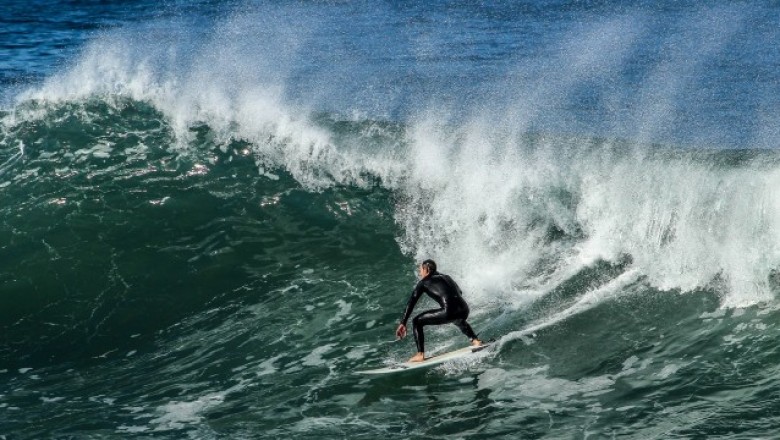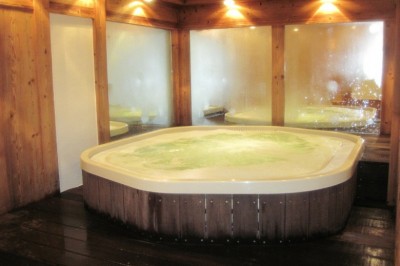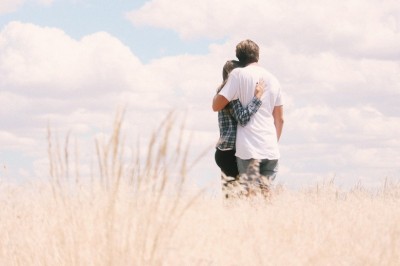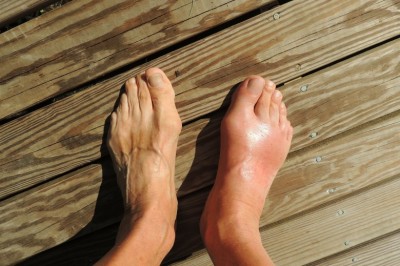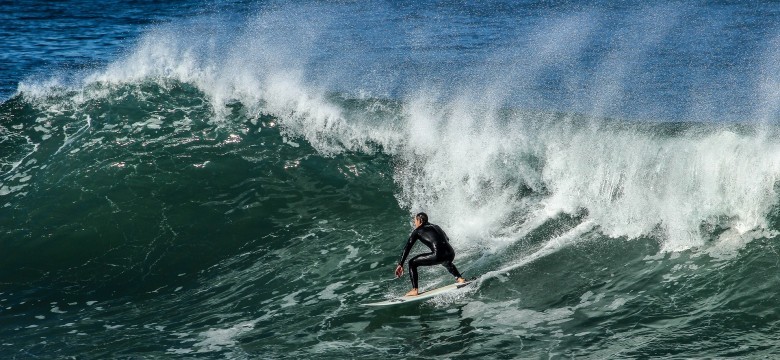
An Analysis of Pacific Sunwear (PSUN)
Copyright 2006 Geoff GannonPacific Sunwear (PSUN) operates two mall based retail chains: PacSun and
d.e.mo. PacSun is a nationwide surf and skate themed chain with about 900 locations comprising approximately 3.25 million square feet. d.e.m.o. is a hip hop themed chain with about 200 stores comprising approximately 500,000 square feet. Both chains target the "teen" market (specifically, guys and girls ages 12-24).LocationsPacSun has expanded from 11 stores in California at the end of fiscal 1986 to almost 900 stores spread across all 50 states and Puerto Rico.For the most part, the stores are distributed among the states roughly in line with population.
The largest exceptions are the usual suspects: Pennsylvannia, New Jersey, and Connecticut. However, the chain also operates more stores in Florida, Georgia, North Carolina, and Arizona than would be expected on the basis of population alone. Despite the companys California roots, its presence in California is roughly proportional to Californias population, if PacSun Outlets are excluded.Nationwide, PacSun operates approximately 800 PacSun stores and 100 PacSun Outlets. Unlike PacSun stores, which are very evenly distributed on the basis of population, PacSun Outlets are skewed towards highly populous states with large areas of extraordinarily high population density ("suburban sprawl").
The only exceptions are Virginia, North Carolina, and Louisiana. While the number of stores in any one state is small enough that the disproportionate concentration of PacSun Outlets in these states may be purely coincidental, I doubt it.More likely, PacSun Outlets in these states are meant to benefit from the expected population growth in their surrounding communities, and were developed because of the danger of saturation in states such as New York, New Jersey, Maryland, Michigan, Illinois, and California.
I have not heard management discuss this matter. So, it is pure conjecture on my part. It will be interesting to see where the new PacSun and PacSun Outlets are located.For the most part, PacSun stores are not unusually concentrated in any state or region. In fact, they are eerily evenly distributed relative to state populations. It is likely management has intentionally acted to ensure an even distribution of PacSun stores across the U.S. As a result, regional economic and demographic trends will have no material effect on PacSuns operations.d.e.m.o. stores are not (yet) as evenly distributed. They are disproportionately located in Northeastern states, Southeastern states, and California. There are relatively few d.e.m.o. stores west of the Appalachians and east of the Sierra Nevadas.
The number of stores in the d.e.m.o. chain is still growing at about 20-25% a year; so, a more even distribution may be achieved in the future. Among teens, hip hop clothing is not limited to the Northeast, Southeast, and California. Therefore, it is unlikely the d.e.m.o. chain will be permanently limited to these regions.StrategyPacific Sunwears strategy is to operate two separate, non-cannibalizing chains. Management claims each chain is focused on a different teen "subculture". I would say subculture is too strong a term (and academics are as guilty as retail executives for stretching the term to the point where it loses its meaning).
However, it is true that the two styles, and indeed, the two sets of customers are distinct. There is virtually no overlap between PacSun customers and d.e.m.o. customers.Although there are some similarities between guys skate and hip hop apparel, these similarities are purely superficial. There is no reason to believe PacSun sales affect d.e.m.o. sales and vice versa. Pacific Sunwear has successfully created "two completely independent sources of sales and growth."In April, the company plans to introduce One Thousand Steps, a new mall-based footwear and accessories chain targeting 18-24 year olds. It is very unlikely this chain will prove to be cannibalizing.TacticsPacific Sunwear locates stores in high-traffic malls.
The company actively seeks to locate its stores in malls frequented by large numbers of teens, despite the fact that this puts the company in direct competition with rivals such as Abercrombie & Fitch (ANF), American Eagle (AEOS), Aeropostale (ARO), Hot Topic (HOTT), and Gap (GPS). There are malls in which one can find PacSun, Abercrombie & Fitch, Aeropostale, and Hot Topic stores all under the same roof.PacSun also operates stores in malls where some of the branded merchandise it sells is being sold in other stores besides those of its main competitors.
Some brands carried by PacSun are sold in department stores; but, the selection is usually far shallower in such stores.However, there are places where PacSun does face deep direct competition. For instance, VF Corporations (recently acquired) Vans subsidiary operates stores in some of the same malls as PacSun. Vans is a well-known maker of skateboarding footwear and apparel (it is much better known for the footwear). Direct competition from Vans is limited; the company only operates about 150 stores.Pacific Sunwear offers name brands complemented by private brands:In each of our store formats, we offer a carefully edited selection of popular name brands supplemented by our own proprietary brands, with the goal being seen by our teenage and young adult customers as the source for wardrobe choices appropriate to their lifestyle.
We believe that our merchandising strategy differentiates our stores from competitors who may offer 100% proprietary brands, greater than 80% name brands, or seek to serve a wider customer base and age range.There is some truth to this statement (pulled from the companys 10-K). It is difficult to assess the d.e.m.o stores in this respect. I believe d.e.m.o. has not been as successful as PacSun in differentiating itself and creating some kind of stickiness with the male customer.PacSuns footwear offerings have been particularly effective in keeping young men coming back. Shoes, particularly the kind PacSun sells, are a good lure for young men, because men tend to frequent their favorite stores far less often than women do.
Even where there are no fashion concerns, shoes must be regularly replaced. Furthermore, males between the ages of 12-24 must buy new shoes, even if there are no aesthetic considerations involved, because old shoes will simply stop fitting their feet.There is anecdotal evidence for this; but, unfortunately I could not find a study describing the annual change in shoe size for different segments of this age group. There is plenty of data on changes in height for males within this age group. However, it is very unlikely changes in height are concurrent with changes in shoe size.
Anecdotal evidence suggests changes in shoe size are more common and more pronounced among males than among females within this age group.It also suggests changes in shoe size would be more common and more pronounced within the youngest segment of this group. This has important psychological implications, because, if true, selling footwear would tend to cause young men to frequent a particular store at a time when they are more likely to form a habit of shopping there regularly.
For instance, one would expect that a male shopper has formed more attachments and stronger attachments to particular stores by the time he is 17 than he had by the time he was 13.Pacific Sunwears stores offer a broad selection of items within each brand. In fact, the company has been responsible for the expansion of some of the brands it carries into new products (particularly footwear and accessories). Pacific Sunwear has encouraged the owners of some of its best known brands to expand beyond their original product and leverage the prominence their brand enjoys within Pacific Sunwears stores into nationwide sales of new products.
Pacific Sunwear is able to effect such changes, because the company is usually one of the largest customers for each of its vendors. In several cases, Pacific Sunwear is the largest customer. The company has more influence over vendors than would be suggested by the size of its total sales, because the products it sells tend to have a more limited distribution than the products carried by some of Pacific Sunwears larger competitors.
The brands carried in PacSun and d.e.m.o. stores benefit from a greatly enhanced image among the "subculture" they target. These are niche brands that become even more closely associated with their particular niche when they are featured prominently in PacSun and d.e.m.o. stores.There is anecdotal evidence that a few of the name brands carried in PacSun stores have become so closely associated with the chain, that, within the customers mind, the brands image and the stores image have fused.
Where a brand carried in PacSun stores is also carried elsewhere, it is almost always much more visible in the PacSun stores, because the target market for PacSun and the target market for the brands it carries are very similar – and the image PacSun projects is relatively undiluted. Other retailers run a greater risk of striking a discordant note.MerchandisePacific Sunwears total sales consist of approximately 67% name brand sales and 33% proprietary brand sales.
Pacific Sunwears two largest individual branded vendors are Quiksilver (ZQK) and Billabong. Both companies are probably still best known for their surf wear; however, they have branched out into other merchandise such as skateboarding and snowboarding apparel and various accessories. Quiksilver is responsible for sales of the Quiksilver, Roxy, and DC Shoes brands; Billabong is responsible for sales of both the Billabong and Element brands.Each companys merchandise accounts for about 10% of Pacific Sunwears total sales or about 15% of total name brand sales.
In other words, about twenty cents of every dollar spent at Pacific Sunwear stores is spent on Quiksilver or Billabong products. These percentages are based on Pacific Sunwears company wide total sales numbers; therefore, it is safe to say sales of Quiksilver and Billabong products make up well over one-fourth of all sales at PacSun stores.Pacific Sunwears total sales consist of approximately 65% apparel, 20% accessories, and 15% footwear. Pacific Sunwear has always sold more guys apparel than girls apparel. In recent years, the gap has narrowed slightly.
Currently, apparel sales consist of approximately 55% guys apparel and 45% girls apparel.Apparel sales account for a smaller percentage of Pacific Sunwears total sales than they had in previous years, because sales of footwear have been growing much faster than sales of apparel. Sales of accessories have grown faster than apparel sales, but slower than footwear sales. Only relative growth is being discussed here; absolute growth has been positive in all categories.
Of course, this is not surprising considering the growth in the number of stores operated.TrendsRecently, growth in the number of total transactions per comparable store at both PacSun and d.e.m.o. has been anemic. However, growth in the average sales transaction was up significantly, allowing Pacific Sunwear to post strong same store sales numbers. Over the last two years, the number of total transaction per comparable store has been virtually flat. Recently, growth in the average sales transaction has been as high as 7-8%.This is a disconcerting trend. I do not doubt that PacSun has a greater ability to raise prices than most teen retailers have. However, that does not mean I would like to see growth come primarily from such price increases (as it has for the last two years or so).This may be a short-term trend. Unfortunately, I am not convinced it is. Pacific Sunwears performance in terms of growth in the number of total transactions and growth in sales per square foot has not been as strong as the headline numbers suggest.
These are two metrics to watch closely in the years ahead.The general impression given by these metrics (and by much of the other available data) is that the PacSun chain is more mature than Pacific Sunwears impressive growth rates suggest. The store count alone might lead some to the conclusion that PacSuns past growth rates are unsustainable. Of course, every retailer must face this dilemma at some point – and specialty retailers like PacSun must confront the problem sooner than most.
At times, comparable store sales growth at PacSun has outpaced comparable store sales growth at d.e.m.o. The difference has often been small, but that does not make it immaterial. In the most recent period, same store sales were stronger at d.e.m.o. than at PacSun. Still, d.e.m.o. does not have the same potential PacSun did. However, management is intent upon adding new d.e.m.o. stores – and, at present, there is no good reason not to.Both PacSun and d.e.m.o. have some room for expansion left – and Pacific Sunwear is generating more than enough free cash flow to fund their expansion. The company already has plenty of cash on hand. In fact, it probably has more cash than it can effectively deploy, considering how much free cash flow Pacific Sunwear will generate next year.GrowthThere is still some growth potential at both PacSun and d.e.m.o. However, the attention of most Pacific Sunwear shareholders will likely be fixed on One Thousand Steps, the companys new mall-based footwear and accessories chain scheduled to launch in April.
One Thousand Steps will target 18-24 year olds.I have mixed feelings about One Thousand Steps. The concept could be a good growth vehicle. Pacific Sunwear needs someplace to put all the cash its generating, and a new concept may be a better long-term bet than continuing to expand the PacSun chain.There is a real danger of overexpansion at PacSun. If things turn negative, Pacific Sunwear will suffer mightily. But, thats the nature of retail. Between the operating leases and the fixed costs associated with each store, specialty retailers are highly leveraged. Sales increases produce spectacular profit growth; sales decreases cause a rapid erosion of those profits.
It is not realistic to assume that a retailer can get out from under the burden of its stores in the same way marketers and manufacturers can exit a particular line of business. The biggest difference is the speed at which profits evaporate. A specialty retailer has little time to adjust course.One Thousand Steps has promise. Pacific Sunwear has demonstrated its ability to manage the growth of mall-based chains. The target audience for One Thousand Steps is part of the same age group targeted by Pacific Sunwears other two chains. Like d.e.m.o., One Thousand Steps will target a very different segment from existing Pacific Sunwear stores.
One Thousand Steps is unlikely to attract the same customers who frequent PacSun or d.e.m.o. Therefore, it should be another non-cannibalizing growth vehicle.Footwear is a good choice for a new mall-based chain. Generally, most malls have underserved the teen footwear market. Although there are some notable footwear chains, a nationwide comparison by store count suggests there is plenty of room for a new mall-based teen footwear retailer. Teen footwear stores are very scarce relative to teen apparel stores.The margins on both shoes and accessories are good. Just as important, Pacific Sunwear has demonstrated its ability to successfully sell both types of merchandise. One particularly appealing aspect of selling footwear is the strong appeal of name brands.
Obviously, customers form stronger attachments to footwear brands than to apparel brand. This is not surprising given the limited number of footwear items purchased relative to apparel items and the frequency with which any one shoe is worn.There are important differences between Pacific Sunwears two existing chains and the One Thousand Steps concept. Both PacSun and d.e.m.o. sell entire outfits. They offer everything needed to dress in the style of the particular "subculture" they serve.
One Thousand Steps will not sell entire outfits. So, the new chain is unlikely to enjoy the same kind of customer stickiness that PacSun and d.e.m.o. enjoy.One Thousand Steps will not be as distinctive as PacSun and d.e.m.o. For now, it is difficult to say how distinctive One Thousand Steps will be. However, it is safe to say the new chain will be less distinct in the minds of customers than either PacSun or d.e.m.o. That isnt surprising. Very few stores are as distinct as PacSun or d.e.m.o. None of Pacific Sunwears major competitors operates stores that have as well defined an image as PacSun or d.e.m.o.Pacific Sunwear will manage the One Thousand Steps chain better than any other company possible could. If you first described the One Thousand Steps concept and then asked what company would be best suited to manage it, I would need only a fraction of a second to say Pacific Sunwear. No company is more knowledgeable about selling footwear to young customers.The PacSun chain has done a tremendous job selling name brand footwear to teens. PacSun is directly responsible for the lasting success of several of the brands it carries.
Although brand name footwear was already an important part of many skaters lives (and more importantly their spending habits), PacSun greatly magnified that importance. Without PacSun, the value of the major skate shoe brands would be significantly less than it is today. Very few retailers have had this kind of positive influence on the brands they carry.It is impossible to evaluate the One Thousand Steps concept at this point. I will be watching the chain carefully to see how it distinguishes itself from its competition, how it increases customer stickiness, and how it selects the brands it carries. The more different One Thousand Steps is, the more successful it will be.One obvious mark against the chain is the name. One Thousand Steps is a terrible name. A store name should be short, simple, distinct, and memorable. PacSun and d.e.m.o. both succeed in that respect.
Actually, those two names are much better than most, because they happen to be (in spoken form at least) made up of actual words.Of course, if the chain does succeed, its unlikely Pacific Sunwear will have any shot at preventing it from being widely known as "Steps". There may be some reason why the chain couldnt be operated under that name. If not, Id say management made a mistake. One Thousand Steps sounds like something that came out of marketing meeting. Its far too cute for use in real world.Pacific Sunwear plans to open 8-10 One Thousand Steps stores during the first half of 2006. Management believes the chain could grow to 600 – 800 stores. At an average size of 2,500 square feet, that would mean the chain could grow to between 1.5 million and 2 million square feet.Upon announcing the new concept (last year), Pacific Sunwear CEO Seth Johnson made the following statement:Footwear has been a highly successful part of our assortment in PacSun stores. One Thousand Steps will enable us to leverage our brand management skills in what we believe is an underserved market. This new concept gives us an exciting growth vehicle that adds a new and distinct customer base to our business. Combined with out existing PacSun and d.e.m.o. businesses, we will have the opportunity to achieve significant sales and profit growth in the future.I am cautiously optimistic about One Thousand Steps. The concept is more promising than d.e.m.o. However, I will have to wait until I see an actual store before I can offer any assessment of the chains profit potential.EstimatesAnalysts are optimistic about Pacific Sunwears future earnings, but pessimistic about Pacific Sunwears shares. Wall Street is estimating 16-17% earnings growth over the next five years.
Thats lower than the growth rate Pacific Sunwear achieved over the last ten years. However, its higher than the growth rate I would predict.The average 5-year earnings estimate from analysts is in the 16-17% range; but, the average recommendation is a hold. These two opinions are mutually exclusive. They are utterly incompatible. You can not predict a 16-17% earnings growth rate for Pacific Sunwear without also predicting the companys shares will outperform the S&P. Well, actually you can, because a great many analysts have done exactly that. But, you shouldnt.PSUN is trading at a P/E of about 14. The argument for a significant multiple contraction is very weak. What company is going to grow earnings at 16-17% a year and sport a P/E well below 12? The obvious answer would be a company weighed down by a tremendous debt burden.
So, how much debt does Pacific Sunwear have? None.The companys total liabilities are about equal to current inventory levels. Current assets (ex other) are about $350 million; total liabilities are about $250 million. The company has about $125 million in cash and marketable securities. Pacific Sunwear can probably generate over $150 million in cash from operations each year.It is unlikely the company can open new stores fast enough to keep free cash flow from reaching 50 - $75 million a year. This is a fast growing company that is generating cash much faster than it can spend it.There is a good chance that, five years from now, there will be fewer shares outstanding than there are today. Therefore, whatever multiple contraction these analyst are expecting would have to bring Pacific Sunwears stock down to a P/E rarely seen by healthy, growing U.S. companies.The companys PEG ratio is well below 1, and its forward P/E is about 12. I dont pay any attention to these numbers, but analysts seem to.
So, why dont they rate PSUN a buy? I dont know and I dont care. It probably has something to do with the industry.Compared to analysts, Im less optimistic about Pacific Sunwears earnings growth, but more optimistic about the companys shares.ProfitabilityPacific Sunwear has consistently earned high returns on equity while employing very little debt. Over the past 10 years, the company has achieved returns on equity of about 17%. Returns in recent years have been higher than returns at the beginning of the ten year period. However, the companys return on equity has been above average throughout the period, and the difference between the ROE of recent years and the ROE of the more distant past is not particularly significant.
Basically, this has been a business with a 17% return on equity for some time.Pacific Sunwear scores well on every profitability metric. The company has a high free cash flow margin – and an even higher owners earnings margin, because the company has invested much more in capital expenditures than required for maintenance alone.Pacific Sunwears return on retained earnings has ranged from 25-50% and its pre-tax return on non-cash assets has ranged from 20-30%. Both of these numbers are quite healthy, especially considering the consistency with which they have been achieved.Pacific Sunwear, like most of its rivals, leases its retail stores under long-term operating leases. The initial term of each lease is usually ten years. The use of operating leases makes it difficult to compare the profitability of companies like Pacific Sunwear with the profitability of companies that do not have any such long-term obligations.Pacific Sunwear has about $700 million in minimum future rental commitments.
The present value of these commitments should be estimated at well under $500 million for purposes of comparison. So, even if one were to compare Pacific Sunwears capital structure with that of non-retailers, PSUN would not appear to be unduly leveraged.PriceShares of Pacific Sunwear currently sell at a relatively modest price-to-sales ratio of 1.2. The stocks (trailing) P/E ratio is about 14. The stocks price-to-book ratio is not all that different from the P/B of the general market, despite the fact that PSUN is expected to grow earnings faster and achieve a higher return on equity than the general market.The price-to-book ratio is not a particularly useful measure for an operator of leased retail stores. The price-to-sales ratio is somewhat more useful, but still questionable, because Pacific Sunwear has a different merchandising mix than many of its rivals.
Pacific Sunwear has an enterprise value-to-EBITDA ratio of under 6 and an EV/sales ratio of just over 1. This is a bit cheaper than comparable peers. A few of Pacific Sunwears more troubled rivals trade at lower EBITDA multiples, but they have much poorer growth prospects and more of a mixed record of sustaining high returns on equity.Most of Pacific Sunwears rivals are selling at much more reasonable prices than they had once traded at. The group does not appear overvalued relative to the market.ConclusionsI dont like owning retailers, and I dont like valuing retailers. If I had to pick an expected 10-year annual return for the investor who buys shares of PSUN at tomorrows opening price, I would pick 12-13%. This rate of return should be enough to beat the market, but is short of the magical 15% rate of return that I believe will lead to a 3-5% real after-tax return for the buy and hold investor.It is conceivable Pacific Sunwear will perform much better than I expect.
If everything goes the way management hopes, and each of the three chains is expanded to the stated goals, the 10-year return could be closer to 15-17%. However, I believe such a high rate of return is unlikely. Im sticking with 13%.If I had to choose between being 100% invested in the S&P 500 or being 100% invested in PSUN, I would probably choose PSUN. If I had to choose between being 25-50% invested in S&P 500 or 25-50% invested in PSUN, I would definitely choose PSUN. Regardless, I expect shares of Pacific Sunwear will beat the market over the next ten years.If you own more than a handful of stocks, PSUN would probably make a fine addition to your portfolio (if acquired at the $22.50 or so at which the stock last traded).------Geoff Gannon writes a daily value investing blog and produces a twice weekly (half hour) value investing podcast at:
http://www.gannononinvesting.com


